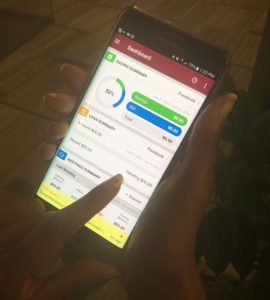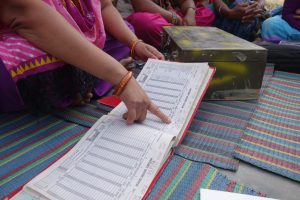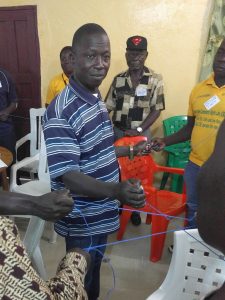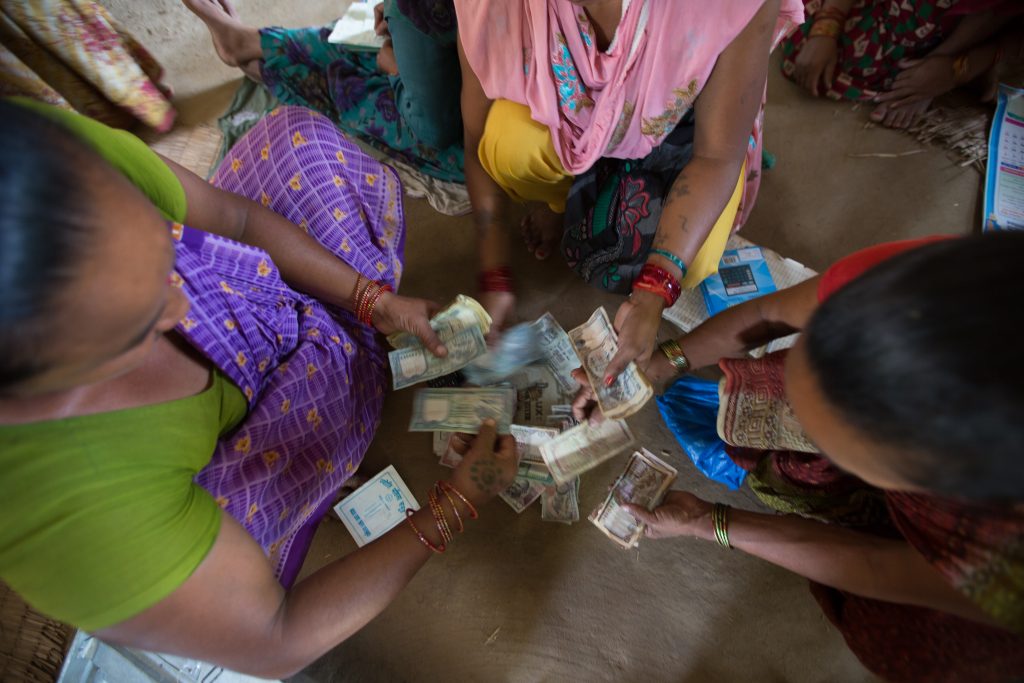Picture this: Data visualizations help nonprofits like Pact feed kids, grow healthy trees and survive cutbacks
Water. Food. Medicine. Shelter. Those are tangible – and obvious – ways aid organizations around the world help people in struggling areas to survive.
Now they’re adding data to that arsenal. And data doesn’t only promise to help women feed their families, foresters collaborate for healthy trees, and miners advocate for their human rights; it could also help nonprofit groups themselves survive amid funding cutbacks.
Take Pact, for example. The 45-year-old, Washington, D.C.-based organization that empowers local groups in developing countries is changing the way data plays into its efforts.
Nowhere is this transformation more visible than in Tanzania, where President John Magufuli has made accountability his hallmark since being elected a year and a half ago. Workers in the government’s various ministries want to prepare for Magufuli’s frequent demands for data to show how their departments are doing. But the staff often have limited access to computers, or may only have one person to collect, enter and analyze the data.
Pact, on the other hand, has a whole team of data crunchers, along with the ability to automatically translate the raw information into accessible reports that visualize a project’s status. So late last year the organization began a five-year project that includes helping Tanzanians use data to help track services for orphans and vulnerable children, especially those affected by HIV and AIDS.
The volunteers who identify and visit the children’s homes are being trained to collect detailed statistics such as gender, age, size of household, its location, and most importantly what services were received, improvements were made and recommendations were given in response to each household’s vulnerabilities. By the end of June, they’ll be able to use the smart phones in their pockets to enter it all into a Pact-built database that then will generate visual reports with Microsoft’s Power BI service to help officials determine how to allocate resources for maximum impact.
Making the database speak
In the past, that kind of information was collected manually, but with 472,592 people visited in the past three months alone, the volunteers’ handwritten notes were virtually unusable for follow-up. Now with digital records, volunteers and officials alike will be able to immediately make use of the raw data to get a broad, national view of how the nation’s orphans are faring, for example, as well as to drill down into regional and even council levels.
“It’s a massive database, but we’re using Power BI to make the data speak to government officials,” said Elizabeth Jere, who runs the project for Pact. “They’ll have real-time reports at their fingertips so they can say, ‘Look at this graph; we’re moving in the right direction,’ or, ‘Look at these 67 councils; this one is doing well but this one isn’t.’ They can start keeping councils responsible for their performance.”

And data isn’t just for officials; it’s spreading down toward the end users, especially young people, Jere said.
“We can provide data to youth on teenage pregnancy, for example, and show them the patterns in different areas, and open up discussions with them about why one school has fewer teen pregnancies than theirs,” Jere said. “Or we can show that this many girls in the area are getting tested for HIV compared to this many boys, and explore with them why there’s this pattern and why the boys aren’t getting tested. Seeing the data could bring about positive changes driven by the teens themselves.”
Empowering locals around the world is Pact’s goal as it seeks to boost capacity, which basically means not only the proverbial mission of teaching people to fish, but also teaching them to keep their river or lake healthy and to manage government regulations and develop backup plans in case the water dries up.

Ending the gender digital divide
As part of this empowerment effort, the poorest women in the world, who are the most vulnerable to being excluded from tech advances, can participate in digital transformation with an app being piloted among the 425,000 members of Pact’s savings and loan programs in 15 countries. The organization eventually plans to offer access to the world’s 7.5 million savings-group participants.
Pact even plans to integrate mobile phone-based money services into the app, helping the women leapfrog to the cutting edge of financial technology and further lessening the gender divide.

Until now, these groups used paper ledgers, making it hard to compare results in Tanzania to those in Myanmar. With the app, Pact will be able to track how the groups are doing and identify any advances in one region that might help another become more robust.
Democratizing data
“In the development world, we had been measuring progress project by project, so at the end of a three-year project in Tanzania we would have data and a report, but we would have no sense of what all that means for the country or region as a whole, or for the five years before or after that project,” said Sarah Ellison, a capacity development senior specialist for Pact. “The lack of a central data hub made learning across projects, regions and years very difficult. Now we’re democratizing that data and are able to learn from it over time and make data-based decisions.”
In Liberia, data from local community forestry management groups is now being entered into online reports through Pact that are helping the foresters learn from each other and strengthen their networks throughout the country to improve everything from bookkeeping to biodiversity inventories. Having access to data, which exports immediately into visual reports, inspires the groups to take more ownership of their progress and seek help where they need it as they develop.
“We have to come and provide evidence that what we are saying is true,” said Peterson Meantro, secretary general of the Gba Community Forest Management Body. “That’s the difference I see, that it’s all done upon evidence now.”

Pact is also working with independent miners to create a SQL Server platform that hosts data about their work, with the goal of helping them advocate for their rights. Artisanal or small-scale miners make up a significant portion of the worldwide mining industry, a sector that’s critical to the global economy yet is almost invisible due to a lack of data.
Flipping the script with data
Pact is using data to flip the script for itself as well. Rather than working mostly on projects that follow donor-driven parameters – usually with funding offered for three to five years to do very specific things – it’s now using data and analytics to seek funding for efforts that are more responsive to local priorities and have the potential for greater impact.
And gone are the days when Pact managers had to spend weeks compiling PDF reports to share with donors a few times a year. Now data can be entered from the field, and with Microsoft Power BI publish-to-web, Pact can provide up-to-date interactive reports online that donors can access at any time. That transparency has promoted even greater support from Pact donors – mostly governments, corporations and foundations – who are better able to get behind a cause when they have visual proof of results. That’s especially important in the current environment of government spending cutbacks.
“Pact takes a holistic approach to our work that isn’t always easy to explain, so we’re hoping tools like Power BI’s data visualization reports will help us make that more clear, especially to donors,” said Mark Reilley, Pact’s senior director of global IT. “We have been pulling in more and more data with these apps and platforms, and now we want to make it accessible and transparent to help us speak with more depth and have more credibility.”
Editor’s note: Microsoft Philanthropies has provided technology support to Pact for the use of PowerBI — available for free to thousands of nonprofits around the world — to ensure Pact can tap the power of the cloud to further its mission.
Lead photo: Members of the Jyoti (Nepali for “the light”) WORTH savings and loan group in Nepal count money before making a new loan. (Photo by Brian Clark/Pact)








